What Camera Do You Bring on a Trip to the Edge of Space?
When making PetaPixel’s documentary about Blair Bunting’s U2 photo shoot at the edge of space (which you should really watch now if you haven’t), one thing we decided not to focus on was the camera gear. But we love talking about cameras and lenses, so Chris sat down with Blair the evening before his epic shoot to discuss the equipment he was bringing up in a U2 spy plane.
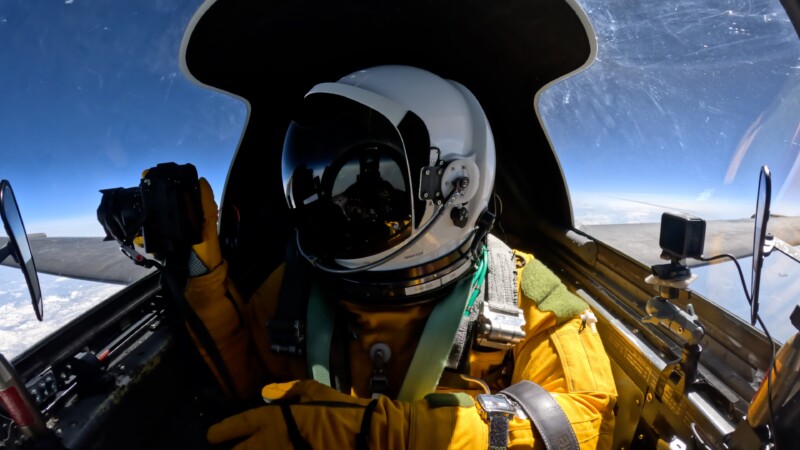
Which Cameras Did He Take?
For his primary cameras, Blair used a pair of 61-megapixel Sony a7R V mirrorless bodies. These cameras have the highest resolution currently available in a full frame mirrorless, but also excellent dynamic range. One had a battery grip attached to guarantee that the battery would last the entire flight. The other had a camera strap attached that unfortunately found itself wrapped around the eject lever!
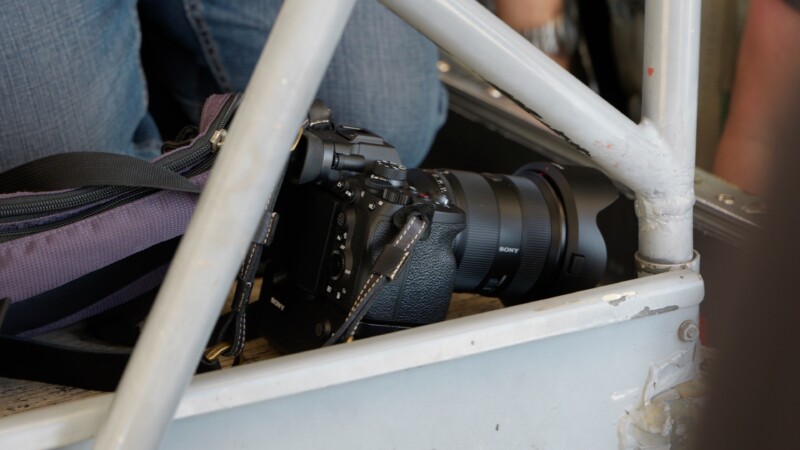
Blair also brought a Nikon Z7 II 42-megapixel mirrorless camera with custom firmware designed specifically for the flight. There were specific requirements that the cameras had all communications disabled, and Nikon was able to provide that. A Nikon Z9/8 was considered, but Blair wanted a mechanical shutter to confirm the camera was operating, as well as the best possible dynamic range.
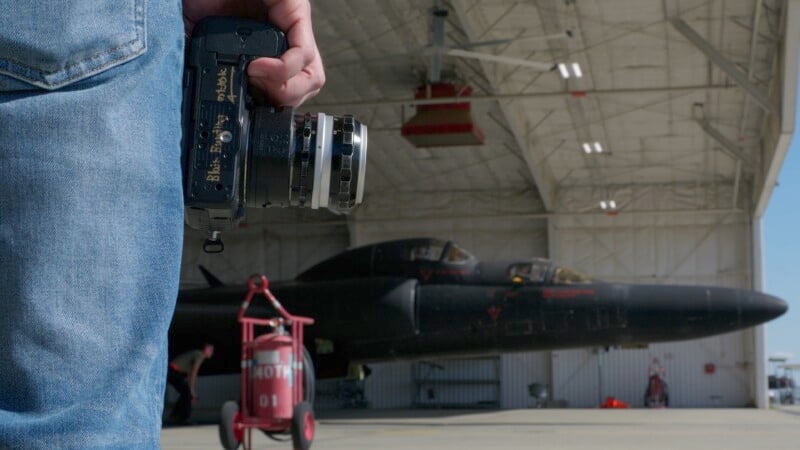
To capture the flight, several GoPro HERO11 Black cameras were in the cockpit running on external power supplies. These were running custom firmware so batteries were not required in the camera housing. This firmware prevented overheating on the two most important camera angles.
Which Lenses Came Along for the Ride?
The priority when selecting lenses for the Sony bodies was finding something compact that would still provide top-notch image quality. For his stunning photos of Earth, Blair utilized a Voigtlander 10mm f/5.6. This lens is extremely small but sharp and well-corrected. For photographing the second U2 spy plane, Blair selected the incredibly sharp, but still compact Sony 24-70mm f/2.8 GM II.
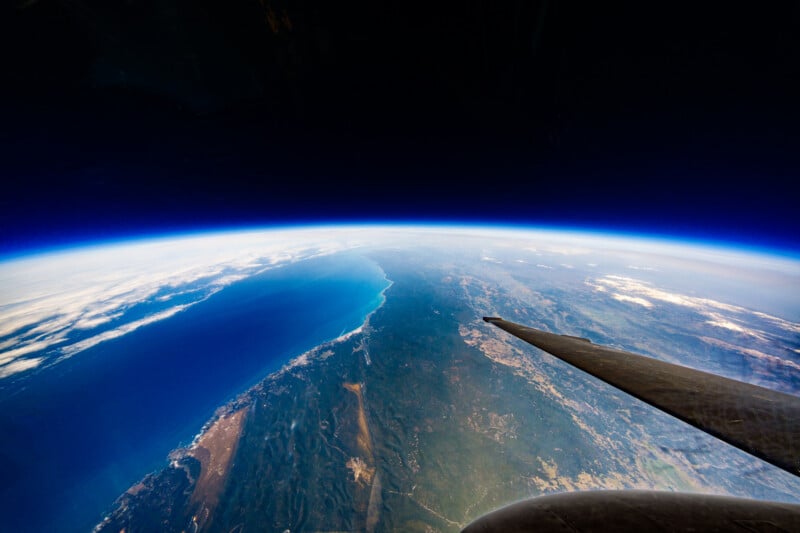
Blair made the decision to bring a third camera up specifically so he could shoot a few photos on his Father’s Nikkor AI 50mm f/1.4 vintage lens. This required the use of the Nikon FTZ II adapter to mount it to the Z7 II mirrorless body. While Blair says that he “wasn’t bringing it to make art”, the images this 50-year-old lens captured are truly striking.

For filters, Blair used a Breakthrough polarizer. Having the reflections of the Earth below and empty space above, combined with the glass of the cockpit, created the fascinating flare patterns that Blair used to strengthen his compositions.
How Did It Go?
As Blair recounts in the full documentary, one of the Sony a7R Vs had the rear LCD fail at 65, 000 feet. The EVF was obviously unavailable since the space helmet kept Blair’s eyes several inches back from the eyecup. Fortunately, Blair felt the shutter fire to confirm the camera was operational, recalled his previous settings, and was able to both expose and frame the shots blind.
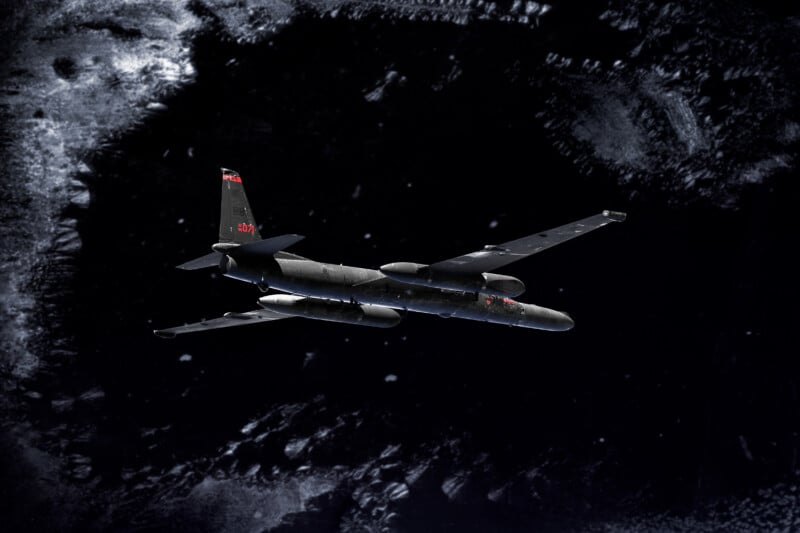
We were able to speak with Blair a week ago for the latest PetaPixel podcast to cover some questions that have arisen since the documentary was published. I asked Blair if he would have done anything differently if he were to do it all over again. I was surprised by his response that he wouldn’t change a thing. He went up with the expectation that he would capture a dozen or so good images of the flight, and returned with over a dozen he was proud of.
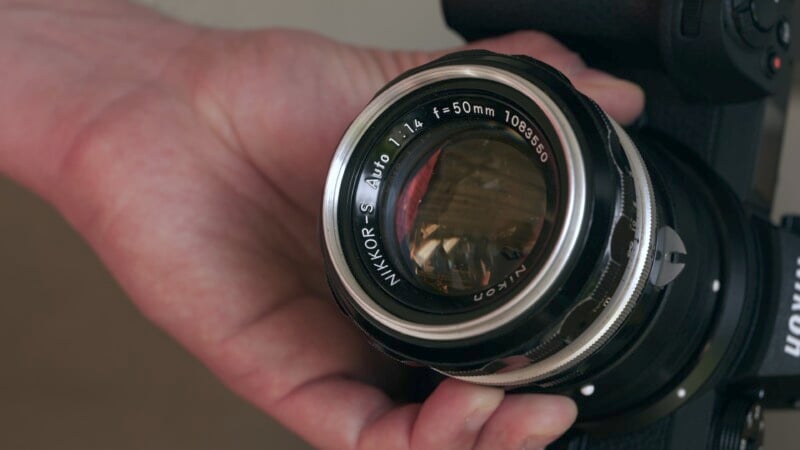
The success of Blair’s shoot is a testament to the value of planning and testing your tools prior to an important project. Blair’s diligence is a large part of why he’s developed the reputation he has for getting iconic shots in difficult situations, and the U2 project is his best example yet.